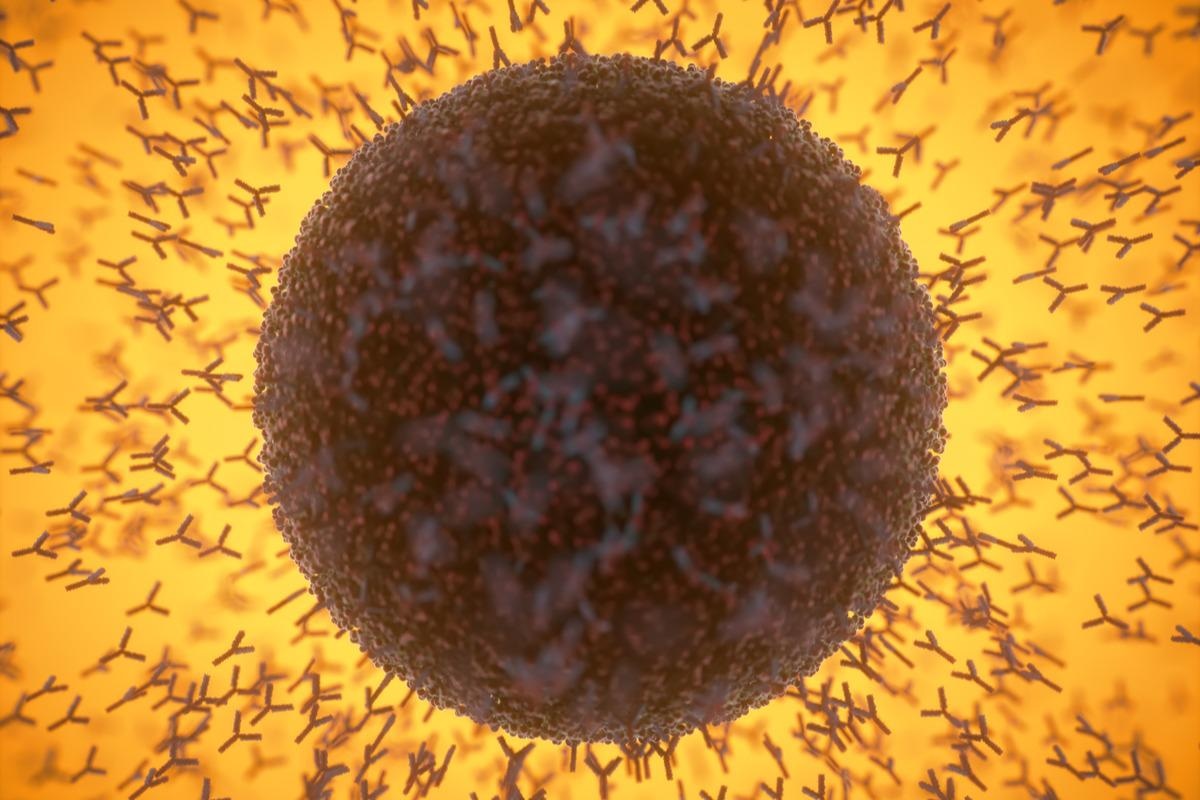Neutralizing antibody responses against parental SARS-CoV-2 strain as well as against Omicron BA.1 and BA.2 variants
In a recent study published in The New England Journal of Medicine, researchers evaluated the immune responses in individuals vaccinated with the BNT162b2 vaccine.

Background
Although the BA.1 and BA.2 variants of the new severe acute respiratory syndrome coronavirus 2 (SARS-CoV-2) variant of concern (VOC) Omicron share several mutations, both also have unique mutations. Recently, BA.2-infected COVID-19 cases have increased in several countries, suggesting increased transmissibility; however, data indicating its immune evasion capabilities is still sparse.
The BNT162b2 vaccine is a messenger ribonucleic acid (mRNA)-based coronavirus disease 2019 (COVID-19) vaccine widely used in mass vaccination campaigns globally.
About the study
In the present study, researchers evaluated the overall neutralizing antibody (NAb) titers induced in individuals receiving the primary and booster vaccination with the BNT162b2 vaccine, particularly the NAb responses against the ancestral WA1/2020 SARS-CoV-2 strain and the BA.1 and BA.2 variants of Omicron.
They obtained serum samples from a bio-repository at Beth Israel Deaconess Medical Center (BIDMC) in Israel.
The team recruited 24 subjects vaccinated and boosted with a three-dose regimen of the BNT162b2 mRNA vaccine, with no history of SARS-CoV-2 infection. The median age of the study participants was 34 years, and 21 were females.
Another eight test subjects, although vaccinated with any COVID-19 vaccine, had a history of SARS-CoV-2 infection; however, only two of these participants (one female and one male) had severe COVID-19 based on the National Institutes of Health (NIH) scale.
The team synthesized SARS-CoV-2 pseudoviruses using ancestral SARS-CoV-2 strain WA1/2020. Then, they added 50 μl of pseudovirus (expressing a luciferase reporter gene) to the test sera. Next, they transfected HEK293T cells with serially diluted heat-inactivated serum samples containing pseudovirus.
Finally, they used a pseudovirus neutralizing antibody assay to estimate the sample dilution at which relative light units were reduced to 50%, i.e., they determined the NT50 values. They presented study data as median or number (percent).
Study findings
After primary vaccination with the BNT162b2 vaccine, the median NAb titers against WA1/2020, BA.1, and BA.2 were 658, 29, and 24, respectively, indicating a higher average NAb titer against WA1/2020, almost 23 and 27 times higher than against the BA.1 and BA.2 variants, respectively.
Six months after the primary vaccination, the average NAb titers decreased to 129 for WA1/2020 and below 20 for BA.1 and BA.2 variants.
Post-two weeks of the booster dose of the BNT162b2 vaccine, the median NAb titers again increased and attained values of 6539, 1066, and 776 for WA1/2020, BA.1, and BA.2, respectively. This finding suggested the significance of the booster dose of the BNT162b2 vaccine, which enhanced NAb titers dramatically by 6.1 and 8.4 times more against WA1/2020 compared to BA.1, and BA.2, respectively. The median NAb titer against BA.2 vs. BA.1 was lower by a factor of 1.4.
In the eight test subjects with a history of COVID-19, the median NAb titers were 4046, 3249, and 2448 for WA1/2020, BA.1, and BA.2, respectively. Notably, the authors made these estimates at a median of 14 days after SARS-CoV-2 infection when the Omicron BA.1 sub-lineage was responsible for more than 99% of new COVID-19 cases. Further, the median NAb titer for BA.1 was 1.3 times the median NAb titer for BA.2. Of these eight, only one unvaccinated individual did not have detectable amounts of NAb titers.
Conclusions
The study highlighted the significance of a booster dose of the BNT162b2 vaccine for consistent induction of NAbs against both Omicron lineages – BA.1 and BA.2. The study data suggested that the median NAb titers were slightly lower against the BA.2 variant than BA.1 variant by a factor of 1.3 to 1.4.
In vaccinated individuals previously infected with the BA.1 variant, the authors noted substantial NAb titers against BA.2 variant, thus suggesting the development of cross-reactive antibodies due to prior infection. Overall, the study findings suggest that an increased frequency of BA.2 despite the ongoing circulation of the BA.1 variant is most likely related to increased transmissibility rather than the enhanced immune evasion capability for which Omicron VOC is generally known.
- Jingyou Yu, Ai-ris Y. Collier, Marjorie Rowe, Fatima Mardas, John D. Ventura, Huahua Wan, Jessica Miller, Olivia Powers, Benjamin Chung, Mazuba Siamatu, Nicole P. Hachmann, Nehalee Surve, Felix Nampanya, Abishek Chandrashekar, Dan H. Barouch, Neutralization of the SARS-CoV-2 Omicron BA.1 and BA.2 Variants, The New England Journal of Medicine (2022), doi: 10.1056/NEJMc2201849 https://www.nejm.org/doi/full/10.1056/NEJMc2201849?query=featured_home
Posted in: Medical Science News | Medical Research News | Disease/Infection News
Tags: Antibodies, Antibody, Assay, Coronavirus, Coronavirus Disease COVID-19, covid-19, Frequency, Gene, heat, Luciferase, Medicine, Omicron, Pseudovirus, Reporter Gene, Respiratory, Ribonucleic Acid, SARS, SARS-CoV-2, Severe Acute Respiratory, Severe Acute Respiratory Syndrome, Syndrome, Vaccine

Written by
Neha Mathur
Neha is a digital marketing professional based in Gurugram, India. She has a Master’s degree from the University of Rajasthan with a specialization in Biotechnology in 2008. She has experience in pre-clinical research as part of her research project in The Department of Toxicology at the prestigious Central Drug Research Institute (CDRI), Lucknow, India. She also holds a certification in C++ programming.
Source: Read Full Article
